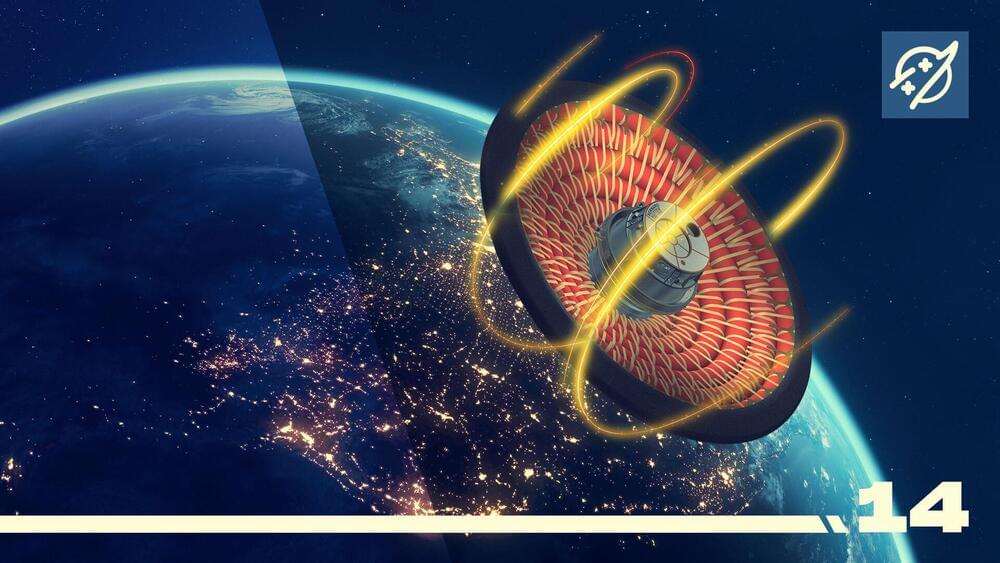Famed anti-aging research pioneer David Sinclair took to twitter earlier this week to formally respond to allegations of unethical business practices and government overreach concerning the recent ban of the popular anti-aging supplement, NMN.



Researchers from Spain and Denmark have discovered a technique for attacking cancer cells in the production of one of the origin-of-life molecules.
The molecule that gave rise to life, RNA
Ribonucleic acid (RNA) is a polymeric molecule similar to DNA that is essential in various biological roles in coding, decoding, regulation and expression of genes. Both are nucleic acids, but unlike DNA, RNA is single-stranded. An RNA strand has a backbone made of alternating sugar (ribose) and phosphate groups. Attached to each sugar is one of four bases—adenine (A), uracil (U), cytosine ©, or guanine (G). Different types of RNA exist in the cell: messenger RNA (mRNA), ribosomal RNA (rRNA), and transfer RNA (tRNA).

The carbon-negative concrete blocks absorb more CO2 during production than they emit.
A Limburg (Netherlands) company called Masterbloc has engineered an eco-friendly building material from steel slag left over from the steel industry, according to an article by The Brussels Times.
The company CEO Bjorn Gubbels claims the block stores CO2 and can help boost the circular economy.
CHUNYIP WONG/iStock.
Masterbloc’s product is CO-2 negative, with more CO2 absorbed during production than emitted. At the company’s factory, some 8-tonnes of CO2-ingesting building blocks are produced per day. This roughly accounts for a yearly output of 15,000 tonnes.

Martin Baechle, Head of System Development Future Brake Systems, on why its new system is a “gamechanger”.
Continental has taken “significant” orders for its Future Braking System It claims this will change the way we think about braking systems forever.
The ultimate aim is “vision zero” — no traffic fatalities, injuries, or crashes.
This story first appeared in our subscriber-only weekly Blueprint newsletter. Receive exclusive interviews and analyses like this, direct to your inbox every Sunday, by subscribing to IE+.

At number 14 on IE’s 22 best innovations of 2022, is a new heatshield technology from NASA that’s helping put out fires.
As the global space industry gears up for human space exploration of Mars and beyond, it will need technologies that make atmospheric entries innumerably safer.
It essentially acts as a massive inflatable break system for spacecraft, making spaceflight much safer.
Ibrahim Can/Interesting Engineering/NASA
That’s where NASA’s Low-Earth Orbit Flight Test of an Inflatable Decelerator (LOFTID) heatshield technology comes in. This year, the US space agency successfully tested the novel heatshield technology in orbit for the first time.

AI-powered assaults will definitely excel at impersonation, a tactic utilized frequently in phishing, as per the study.
A recent cyber analytical report has warned that artificial intelligence (AI) enabled cyberattacks which are quite limited until now, may get more aggressive in the coming years.
The Helsinki-based cybersecurity and privacy firm WithSecure, the Finnish Transport and Communications Agency, and the Finnish National Emergency Supply Agency collaborated on the report, according to an article by Cybernews on Thursday.

It all began with a molecular cloud.
A study in GeoScienceWorld.
It all began with a cloud. That cloud was mostly hydrogen, water’s main component, with a touch of helium, oxygen, and carbon.
The oxygen in the cloud then came into contact with a dust grain. It froze and adhered to the surface.
Petmal/iStock.
Water originated on Earth through a four-step process.

The European Space Agency recently announced a new mission of its science program: a small telescope orbiting the Earth dubbed Arrakhis.
The European Space Agency (ESA) recently announced a new mission of its science.
Amriphoto/iStock.
Instead, this nimble satellite will punch hugely above its weight and try to track down one of the most elusive and mysterious substances in the universe: dark matter. This is the term given to the hypothetical invisible matter that is thought to be more abundant than normal matter and has a similar gravitational effect on its surroundings.

The three major lessons on energy security.
On October 19, European Commission president Ursula von der Leyen announced that the EU had replaced two-thirds of its Russian gas imports since February by switching to other suppliers. Such a turnaround seemed unattainable last spring when the invasion of Ukraine turned Moscow from an EU business partner into a military threat.
Despite the EU’s reduction of its energy dependence on Russia, there is work to be done in the long term. To achieve autonomy from Russian energy, the Union could learn from the experience of one of its members, Lithuania – a country which, since declaring its independence from the USSR in 1990, has been able to adapt to a complex geopolitical context to ensure its energy security.
The Lithuanian case has three major lessons.
Lesson 1: Don’t give up nuclear power
Lithuania’s path to energy independence has not been easy.
This course equips students to see space exploration not only as rocket science but also as a topic for social science.
Uncommon Courses is an occasional series from The Conversation U.S. highlighting unconventional approaches to teaching.
Edwin Tan/iStock.
Title of the course: